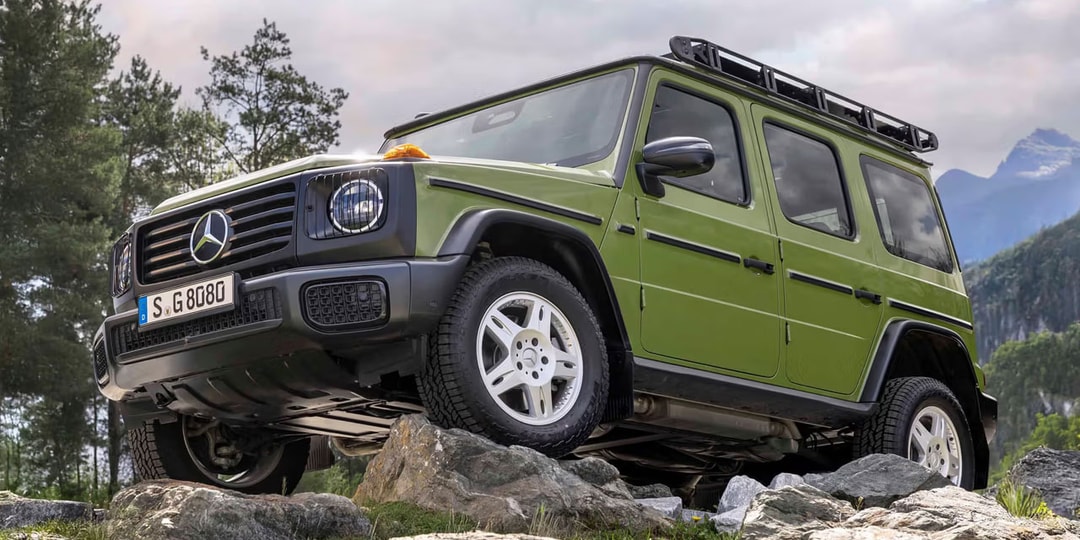In an era of screens, sensors and electrification, it might seem surprising that some of the most talked-about cars in 2025 look straight out of the past. But retro design isn’t just a nostalgic gimmick — it’s become a powerful aesthetic tool for brands looking to stand out and reconnect with heritage. From boxy silhouettes to throwback interiors, carmakers are reaching into the archives to shape the future.
Mercedes-Benz G-Class: STRONGER THAN THE 1980s
One of the clearest examples comes from Mercedes-Benz. The G-Class Edition STRONGER THAN THE 1980s revives design cues from the original W460-series Geländewagen — the model that laid the foundation for the modern G-Wagon’s cult following. Finished in MANUFAKTUR agave green or Colorado beige, the SUV brings back orange indicator lights, matte black bumpers and retro-style badging.
Even the interior channels the ’80s, with dove grey inserts and a grab handle labeled “STRONGER THAN THE 1980s.” It’s a visual time machine, but one that’s paired with the G-Class’s latest tech and comfort features. The result is an SUV that feels fresh, but instantly familiar.
View this post on Instagram
Porsche 911 Spirit 70: A Heritage Hybrid
Porsche has mastered the art of balancing past and present, and the new 911 Spirit 70 is another proof point. Limited to 1,500 units, the car takes the 911 Carrera GTS Cabriolet and dresses it in Olive Neo paint, Bronzite accents and black silk-gloss racing stripes. It nods to the brand’s 1970s and early ’80s models with details like a 1963-style crest and gold badging.
Inside, the use of a reimagined black-and-olive Pasha pattern evokes one of Porsche’s most iconic interiors. The fully digital gauge cluster still mimics analog dials, reinforcing the idea that emotion and memory can live alongside performance and technology. Under the hood, the 541 hp hybrid boxer engine ensures it’s anything but dated.
View this post on Instagram
Land Rover Defender V8 Soft Top: Built by Hand, Styled by History
Land Rover’s revival of the Defender Soft Top might be the most rugged entry in the retro resurgence. The Classic Defender V8 Works Bespoke Soft Top reintroduces a convertible Defender for the first time since 2016 — hand-built from donor vehicles, each upgraded with a 405 hp V8, Alcon brakes and a modern suspension system.
What makes it stand out is the care taken to preserve original details: canvas hood options, Wolf wheels and North American NAS 90-inspired tie-downs. Customers can personalize nearly every aspect — from leather trims to surfboard racks — but the overall look remains faithful to the past.
Why Retro Still Works
This design trend isn’t about living in the past. It’s about emotional storytelling. In a market dominated by sleek, minimal EVs, retro-inspired vehicles bring texture, personality and brand identity. They remind us that good design doesn’t need to be reinvented — sometimes it just needs to be reinterpreted.
It also gives brands a way to stand out visually. When so many modern cars share the same aerodynamic silhouettes and LED signatures, throwback styling offers instant recognizability. A square-edged G-Wagon, a Pasha interior or canvas Defender roof doesn’t just recall history — it cuts through the sameness of today’s design language with something that feels personal and iconic.
The post Is Retro the New Modern in Automotive Design? appeared first on Hypebeast.




